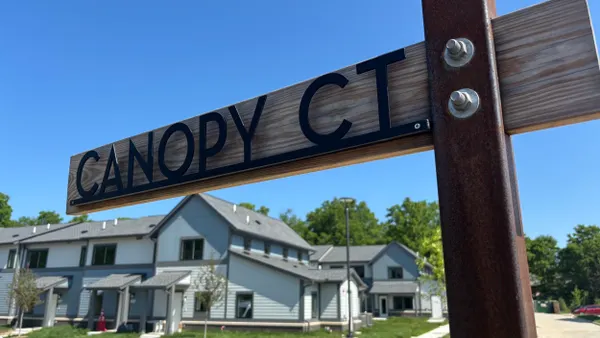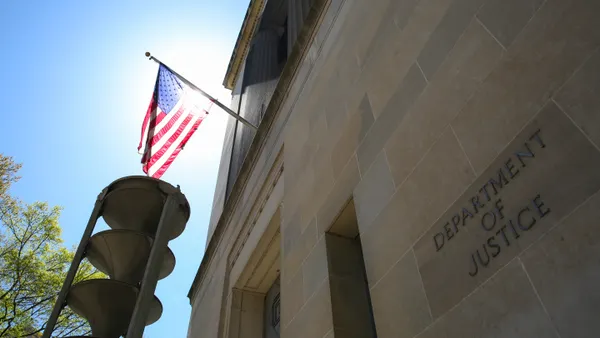Dive Brief:
- Actions that aim to lower the cost and increase the supply of housing were announced by the Biden administration last week.
- The measures include an $85 million grant program to help communities remove local policy barriers to housing production and greater housing density in commercial areas, such as through zoning and land-use reform. The administration also launched new financing opportunities for affordable housing as well as initiatives to support commercial-to-residential conversions and accessory dwelling unit development.
- The initiatives could help address the affordable housing gap over time, but “it’s not clear that this framework, in itself, can overcome the decades of underinvestment in affordable housing in the short term,” said Benjamin Henwood, director of the University of Southern California’s Center for Homelessness, Housing and Health Equity Research, in an email.
Dive Insight:
The Biden administration had pushed for an influx of new funding, including $170 billion for affordable housing, in the Build Back Better bill, which died in Congress last year. That funding has still not come to fruition, but the administration has taken several actions since then to help protect renters and address the rising cost of buying and renting a home.
Last year, the White House released a housing plan that, among other initiatives, gave cities and towns with reformed zoning and land-use policies higher scores for certain federal grants. According to the White House, the latest actions are in line with that plan’s vision of creating “an economy where everyone has access to a safe and affordable home.”
Highlights of the new actions include the following:
- A new $85 million U.S. Department of Housing and Urban Development program, Pathways to Removing Obstacles to Housing, will award up to $10 million grants to jurisdictions with a large demand for affordable housing that are working to identify, address and remove barriers to housing production and preservation. Efforts might include reforming zoning to allow higher density or multifamily housing, streamlining affordable housing development and reducing parking or land-use restrictions.
- New HUD guidelines increase the loan limit for multifamily housing projects. The agency will also allow larger loans to participate in its Low Income Housing Tax Credit Pilot Program, which would increase the number of apartment sites that are eligible for streamlined financing.
- A new interagency working group will support federal funding opportunities for commercial-to-residential conversions. HUD will also fund office-to-housing conversion research and produce a new guide for state and local officials on how to make such projects more economically viable.
- A $450 million U.S. Department of Transportation program announced last month incentivizes regional partnerships that address equitable access and mobility challenges while making land-use reform a key priority.
- A $27 billion Greenhouse Gas Reduction Fund announced last month will provide financing for clean energy projects, including retrofits of existing homes and buildings, construction of zero-emissions buildings and commercial-to-residential conversion.
Experts say the latest changes could help, but not solve, the nation’s affordable housing crisis.
Henwood said it’s not clear that money and incentives are the key to changing local zoning restrictions, since those decisions are ultimately made by local elected officials. However, new funding that incentivizes commercial-to-residential conversions could be more effective, since those projects are expensive, he said.
The White House’s proposal provides communities with meaningful incentives to adopt policies, including less restrictive zoning policies and regulations, that will better facilitate the development of affordable housing, said Kim Johnson, manager of public policy at the National Low Income Housing Coalition, in an email.
“The Biden-Harris Administration has demonstrated a commitment to addressing the affordable housing crisis in meaningful, welcome, and robust ways,” said Johnson. “However, the success of any administrative action on affordable housing supply will be constrained without additional federal resources to construct and preserve homes affordable to people with the lowest incomes.











